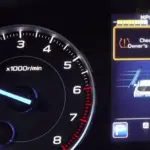What Does Brake Fluid Look Like?
Ah, brake fluid – the unsung hero of our daily commutes. It’s one of those things in our cars that doesn’t get much attention. Until, of course, it decides to go rogue. Then, suddenly, it’s the center of our automotive universe. But what exactly does this mysterious liquid look like? And why should you, a noble charioteer of the modern roads, care? Let’s embark on a journey to demystify the enigma that is brake fluid.
January 31, 2024
Table of ContentsShow
The Basics: Understanding Brake Fluid
Before we get our hands dirty (quite literally, if you’re actually checking brake fluid), let’s understand what brake fluid does. This unassuming liquid is responsible for transferring the force from your foot on the brake pedal to the brakes themselves. Think of it as the messenger that yells “Hey, slow down!” to your wheels.
Appearance and Properties
Color:
Fresh brake fluid usually has a clear, slightly yellowish hue. It’s like looking at a very light beer or a particularly hydrated person’s urine sample – but please, don’t taste it to confirm the similarity!
Consistency:
It’s got a consistency akin to cooking oil. Not too thick, not too thin – Goldilocks would approve.
How it Changes Over Time
Darkening Color:
Over time, brake fluid can turn from its original light color to a darker shade, sort of like tea that’s been steeping a bit too long. This is your cue that it’s either developing a complex flavor profile or, more likely, it’s time for a change.
Debris:
You might also see tiny particles floating around in there, which is your brake system’s way of saying it’s been working hard and is now bringing back souvenirs.
Why the Color and Appearance Matter
It’s a Health Indicator
Detects Moisture:
If your brake fluid looks more like a dark stout than a pale ale, it might be contaminated with moisture. And just like how water ruins a good phone, moisture ruins good brake fluid.
Wear and Tear:
The darker color can also indicate wear and tear in the brake system. It’s like getting gray hairs but for your car.
Safety Concerns
Braking Efficiency:
Contaminated or old brake fluid can compromise the effectiveness of your brakes. This is not a situation where “close enough” cuts it. You want those brakes working like a charm.
Checking Your Brake Fluid: A Step-by-Step Guide
Okay, time to roll up your sleeves and get to the fun part. Checking your brake fluid is like playing detective, but with less danger and more grease.
Locate the Reservoir:
Open your hood and find the brake fluid reservoir. It’s usually a small, clear container near the back of the engine bay. If you can’t find it, consult your car’s manual or your favorite search engine. Don’t be shy; even seasoned car enthusiasts do it.
Examine the Fluid Level:
There are usually “min” and “max” lines on the reservoir. If the fluid is below the “min” line, it’s time to top it off. Just like how your mood dips below “min” when you run out of coffee.
Inspect the Color:
Use a flashlight to check the color. If it’s dark, it’s time to consider a change. Think of it as giving your car a spa day.
When to Change Your Brake Fluid
Manufacturer’s Recommendation
Frequency:
Most manufacturers recommend changing brake fluid every two to three years. But just like dentist appointments, it’s often ignored until absolutely necessary.
Visual Inspection
Color Change:
Remember, dark color = bad.
Debris:
Particles in the fluid are like uninvited guests at a party – they shouldn’t be there.
DIY vs. Professional Service
Doing It Yourself
- Pros: It’s cheaper, and you get bragging rights.
- Cons: It can be messy, and without the right tools, you might end up like a fish out of water.
Professional Service
- Pros: They know what they’re doing, and you get to enjoy a coffee while waiting.
- Cons: It can be more expensive, and you miss out on potential bragging rights.
Conclusion: Keeping Your Brakes in Check
So, there you have it, a deep dive into the world of brake fluid. Remember, it’s not just about what it looks like, but what it represents – the health and safety of your braking system. Next time you’re sipping on a light-colored beverage, spare a thought for your car’s brake fluid, the unsung hero keeping you safe on the roads. Stay vigilant, stay safe, and maybe, just maybe, give your car that long-overdue brake fluid change. Happy driving!


